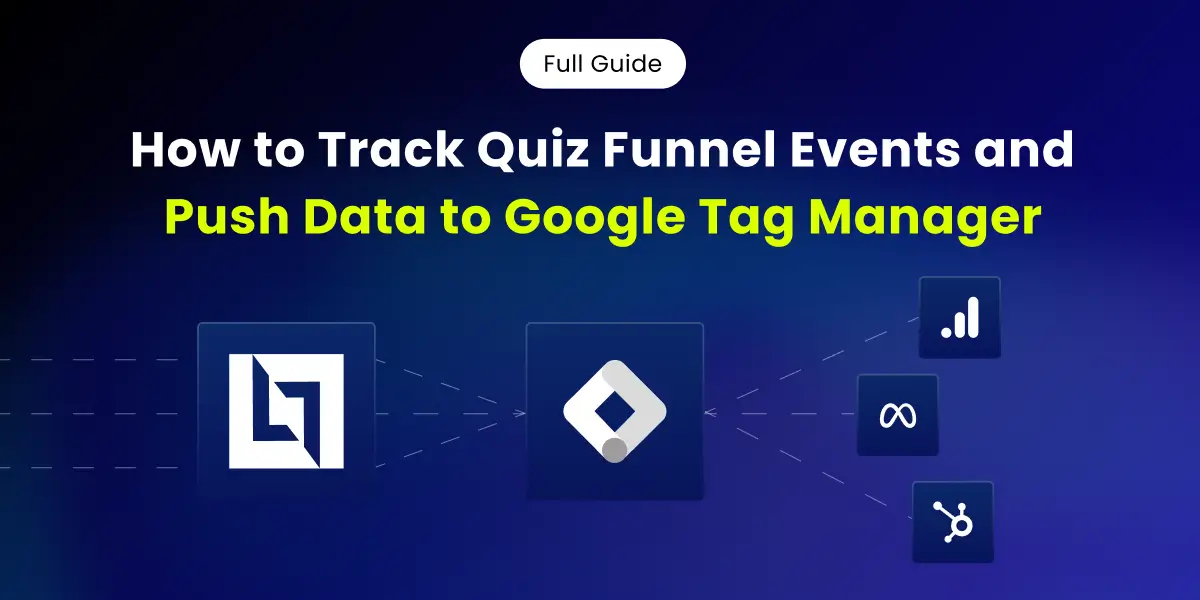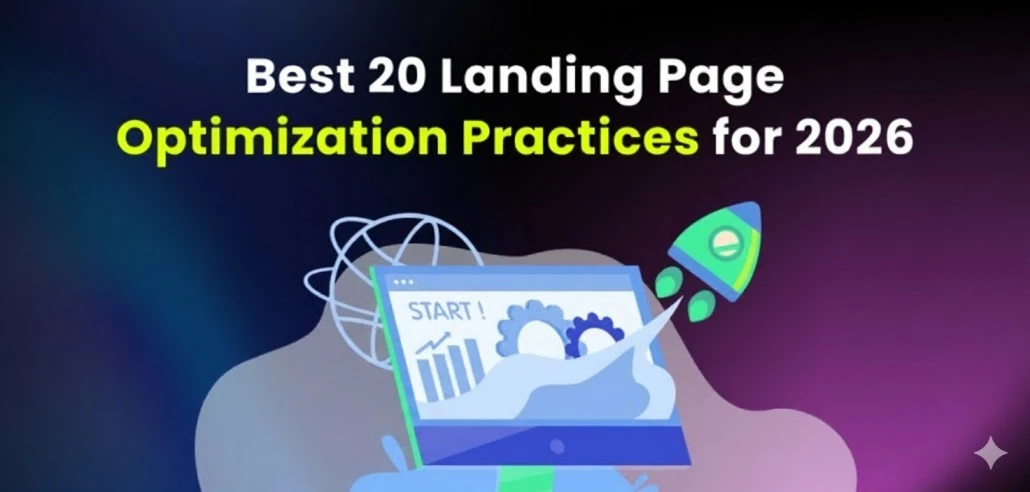We already know that having an effective online presence isn’t just an advantage but a requirement for business success nowadays. Among the many tools in digital marketing, landing pages stand out as powerful tools.
A landing page is a specialized webpage designed with a single, focused purpose and that is to convert visitors into leads or customers.
Unlike other pages on your website, visitors “land” on this page after clicking through from a specific marketing channel. That could be an email campaign, advertisement, search result, or social media post.
Think of a landing page like a digital salesperson with one job. Just like a good salesperson helps a customer buy something specific without getting distracted, a landing page guides visitors toward one specific action.
You get to choose what this action will be:
- Making a purchase
- Signing up for a newsletter
- Downloading a resource
Before we dive deeper into what a landing page is exactly, let us first get one thing out of the way: what is the difference between landing pages and homepages?
Jump to Section:
Landing Page vs. Homepage: Key Differences
Have you ever wondered why some websites seem cluttered and overwhelming, while others guide you effortlessly toward taking action?
The secret often lies in understanding when to use a homepage versus a landing page.
To truly understand landing pages, it’s helpful to contrast them with traditional home pages.
What is a Homepage?
Your homepage serves as a general gateway to your business, like the lobby of a building.
It typically has the following:
- comprehensive navigation to all areas of your website,
- multiple calls to action for different purposes,
- showcases your brand’s overall identity and values.
It also allows multiple audience groups to explore their opportunities with your business.
Here’s an example of a homepage:
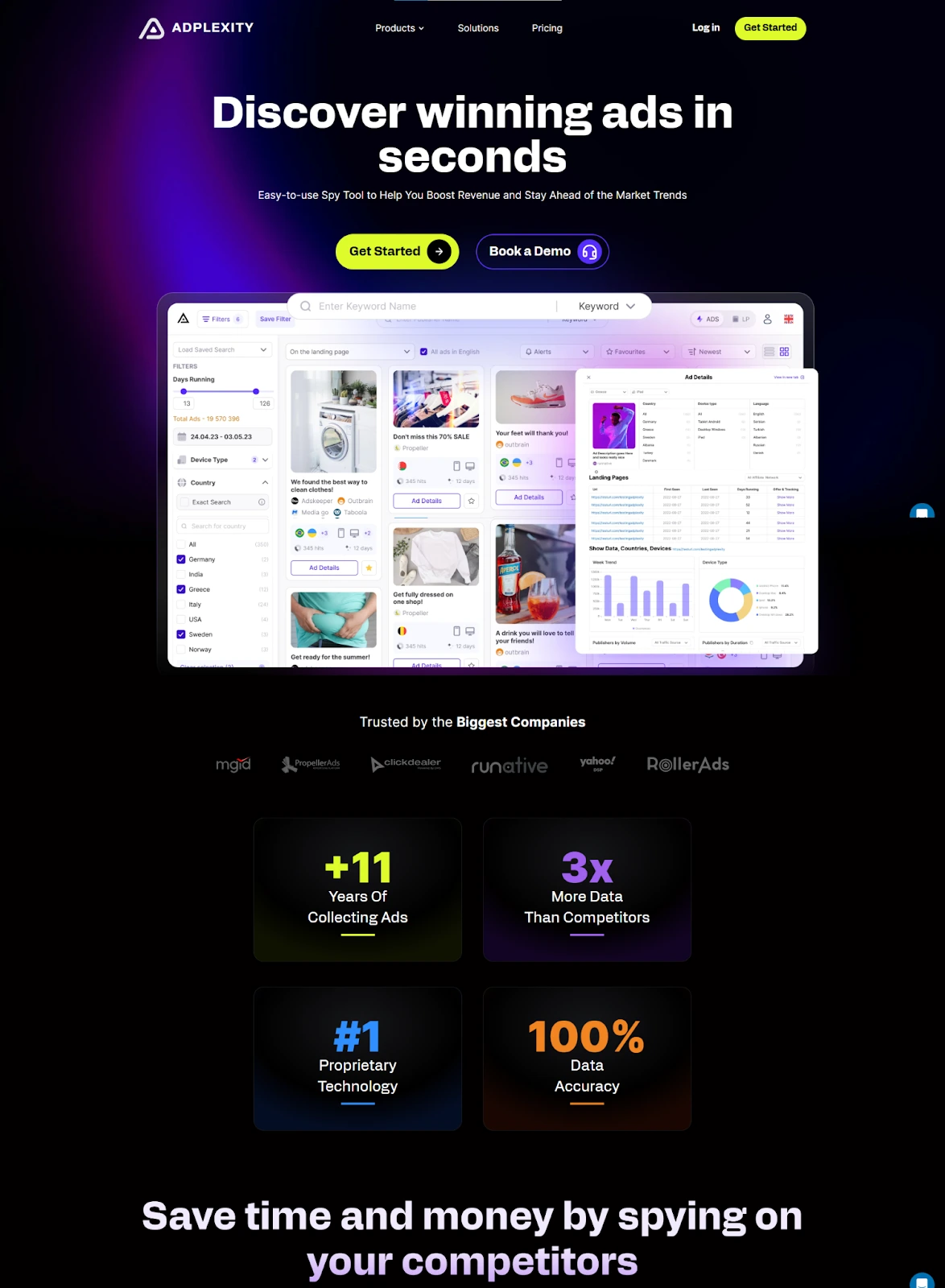
What is a Landing Page?
A landing page, by contrast, functions more like a focused consultation room.
It has a clear and primary objective. It also has an efficient flow that focuses on conversions (by eliminating various distractions) and a primary call-to-action that delivers targeted messaging for your specific audience.
Check the sample landing page below from the same company as the homepage featured above. The goal of the landing page is to convert the visitor into a paying user for the tool.
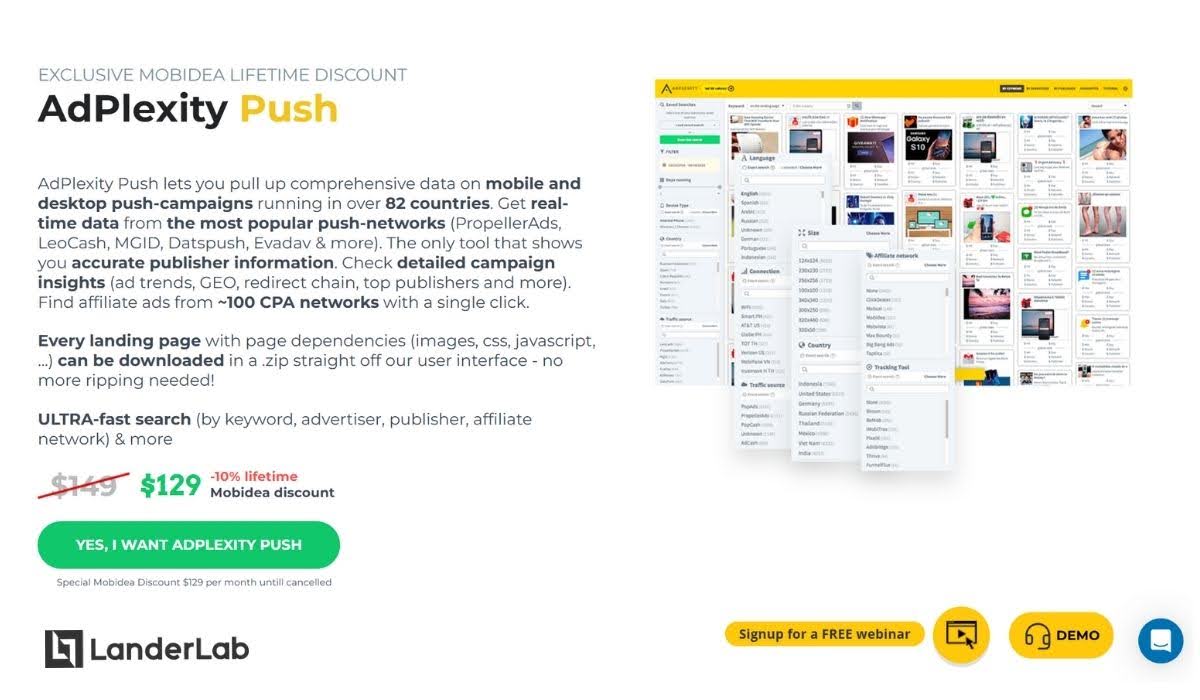
Based on the information on the landing page, it is evident that the visitor came from an article or a blog post recommending the tool. All the information ties up together and the visitor is lead to the CTA button. There are no navigation menus that serve as distractions.
How Landing Pages Drive Marketing Success
Many businesses make the costly mistake of driving their ad traffic to their homepage, watching their conversion rates suffer as potential customers get lost in navigation menus and competing calls-to-action.
If you want to improve your chances of success, we recommend you use a landing page. To convince you, here are some of the reasons why it can help your business growth:
Improved Conversion Rates
Studies and reports over and over show that landing pages significantly increase conversions for a business. In fact, if you have anywhere between 10 to 15 landing pages for your business, you’ll see an increase in customer acquisition by at least
55%.
By eliminating distractions and maintaining a singular focus, landing pages achieve higher conversion rates than regular web pages. This focused approach helps visitors stay on track toward completing the desired action.
Better Audience Segmentation
Different landing pages can target different audience segments. This allows you to prepare customized messaging for specific demographics and tailor your offers based on various customer needs.
This can be executed through the creation of geo-specific content and promotions, partnered with personalized approaches for various customer journey stages.
Enhanced Analytics and Optimization
The focused nature of landing pages makes them ideal for testing and optimization. A well-structured landing page can provide easy A/B testing of different elements and clear metrics for success measurement.
Its simplified analysis of user behavior helps in the pre-planning and targeting of improvement opportunities, as well as the creation of proactive plans in case the market trends sway the other way.
When to Use Landing Pages
Of course, landing pages are not the be-all and end-all of your online presence. Landing pages prove particularly effective in several specific scenarios:
1. When Using Pay-Per-Click (PPC) Advertising
Landing pages dedicated to specific advertisements perform better in search results. That is because they provide highly relevant content that immediately matches the ad’s promise. This relevance increases conversion rates while improving quality scores.
2. Lead Generation Campaigns
When offering valuable content or resources, also known as lead magnets, landing pages provide the perfect environment for exchanging these assets for visitor information.
Common lead magnets include eBooks, whitepapers, and free trials/samples that can be given to entice visitors. Webinar registrations, educational guides or checklists, and even exclusive content access offers can also do the trick, especially when part of a well-planned lead generation campaign.
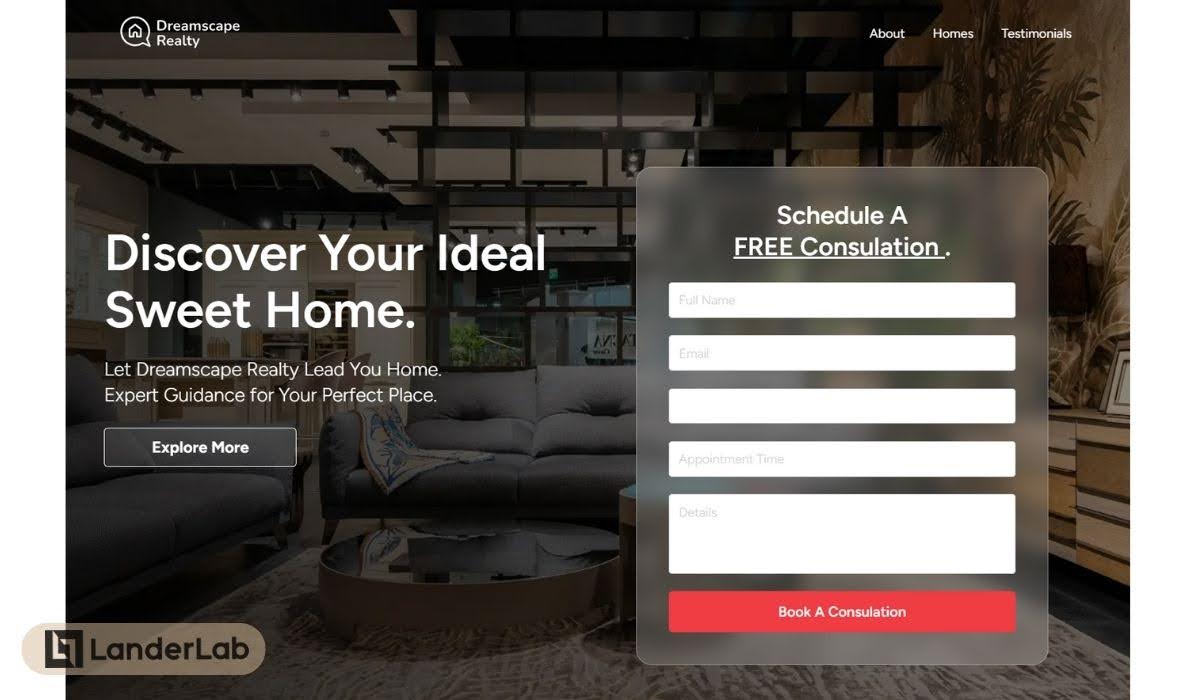
Some lead generation campaigns have no lead magnets, though. These are the ones that focus on sharing the benefits and features of a product or service to encourage form sign-ups. Often, visitors of such lead capture pages expect the business to contact them to provide more information on the service.
Create a Lead Capture Page That Converts
Don’t wait for leads to find you. Guide them with a high-converting capture page that highlights your offer’s value. No distractions, just clear benefits and a direct path to conversion.
3. Product Launches or Special Promotions
When introducing new products or running special promotions, dedicated landing pages help focus attention on the specific offering by creating urgency and exclusivity, providing detailed information about the offer, and accurate tracking of campaign performance.
Types of Landing Pages
There are several types of landing pages that you can choose from, and each one is designed according to a specific purpose.
We’ll have a separate post that will dive deeper into this topic, so let’s just discuss a few of them briefly here so we can better understand when and how to use them effectively.
👉 Want to explore every variation in detail? Read our complete guide on Types of Landing Pages to learn about all formats and when to use each one.
Long-Form Landing Pages
These function as detailed product brochures in digital form. They work best when your offering needs a thorough explanation or justifies a high price point. They serve customers who need comprehensive information before deciding.
Effective long-form pages include complete product information, supporting media, social proof, FAQs, and multiple CTAs throughout.
Product Landing Pages or Sales Pages
These pages function as specialized display windows for specific products or services. They excel at demonstrating value while highlighting key features.
Use them to convert visitors who already know your product or guide them further along your marketing funnel.
Effective pages include high-quality images paired with concise product and pricing details. Customer reviews and testimonials help demonstrate your product’s real-life impact.
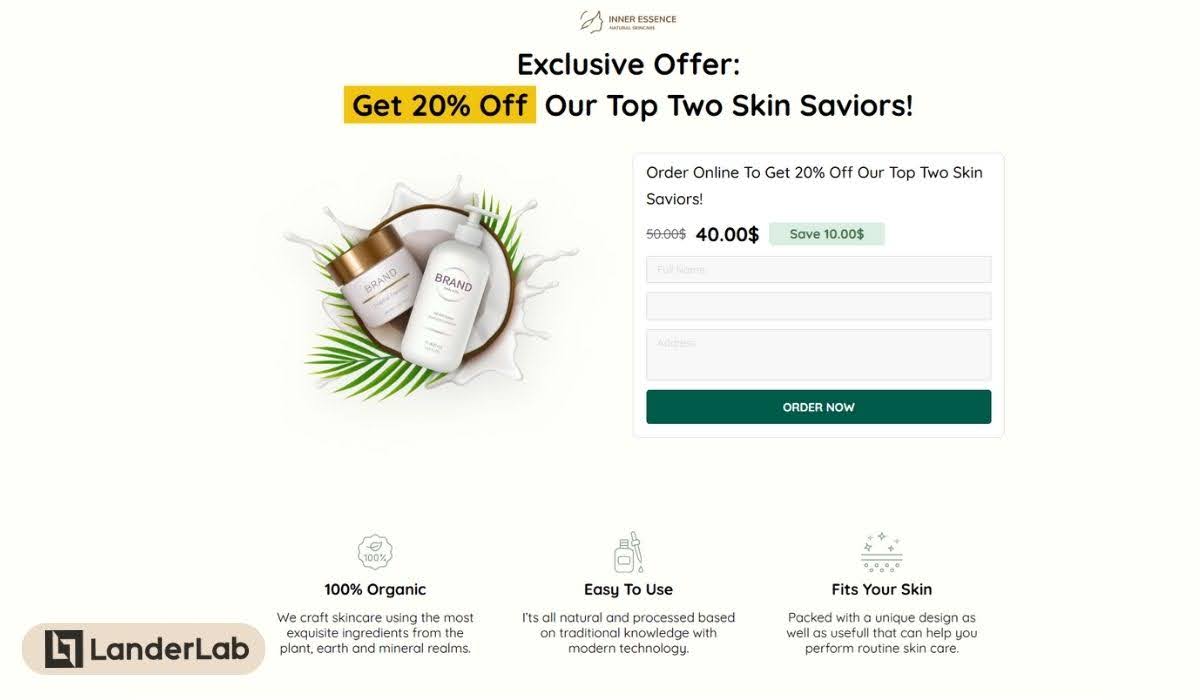
Squeeze Pages
These are the quick conversation starters of the landing page world. They serve a single, focused purpose: either to capture leads or to serve as a “warm up” page for cold visitors.
Lead Generation Landing Pages
This is utilized when you are building email lists, a quick and valuable resource to build relationships with potential customers. It’s also helpful if you’re focused on generating leads or making sales. A strong
lead capture landing page is a good way to put these strategies to work.
Click-Through Landing Pages
These serve as a gateway for the marketing funnel. It helps capture user interest, leading them further towards learning more about the product, service, or offer by clicking on the CTA button.
Speaking in terms of a marketing funnel, click-through pages serve the “Attention” and “Interest” phase. Clicking on the CTA within this page takes the user to the “Decision” phase where an enticing offer is provided to them and they can decide to grab the opportunity or not.
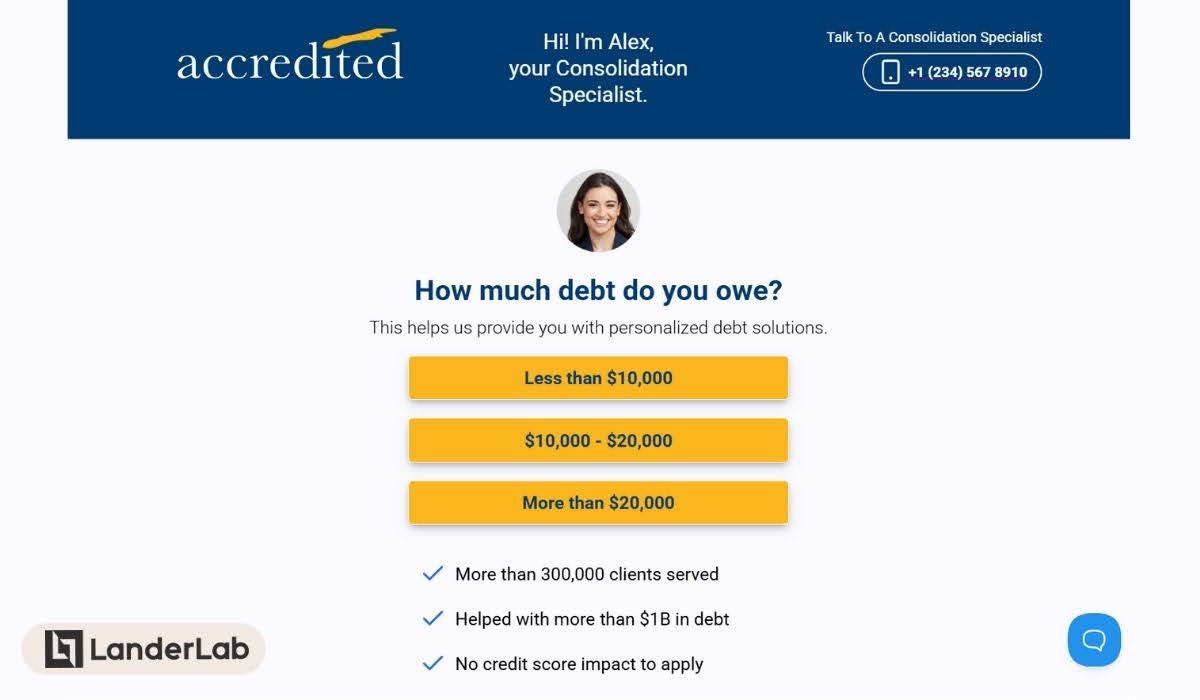
Event Landing Pages
These dedicated landing pages work like digital event invitations, providing all the necessary information about an upcoming event.
It’s best used for conferences and webinars, product launches, and special sales events. It must have elements of the Event Date, Time, and Location, Speaker information, and registration forms/ ticket options.
Nowadays, it’s also necessary to mention if the event is physical or virtual.
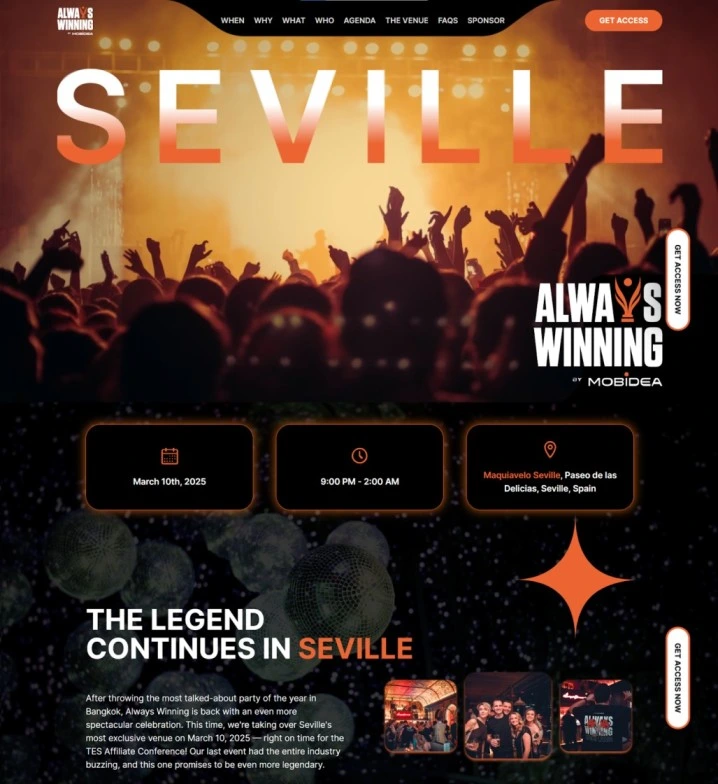
Coming Soon Pages
These pages build anticipation and gather early interest, like a movie trailer for your product or service. Effective for upcoming product launches, website redesigns, and new business openings.
Its key elements are the Launch Date Countdown, Teaser, Preview information, and Email signup form.
Thank You Pages
Thank You Pages contain the Confirmation message, the product’s delivery information, and additional relevant offers. Here you can also add an option for sharing the experience in social media.
Often overlooked but crucial, these pages serve as digital relationship builders after a conversion. They help verify successful form submissions, provide immediate value, and guide their next steps. This is also where additional conversion opportunities might be applied.

Unsubscribe Pages
These pages represent your last chance to maintain a connection with subscribers. It should offer alternative agreement options before unsubscription, a feedback form, and a clear unsubscribe confirmation. It should also gather feedback, and leave an opening for future communication.
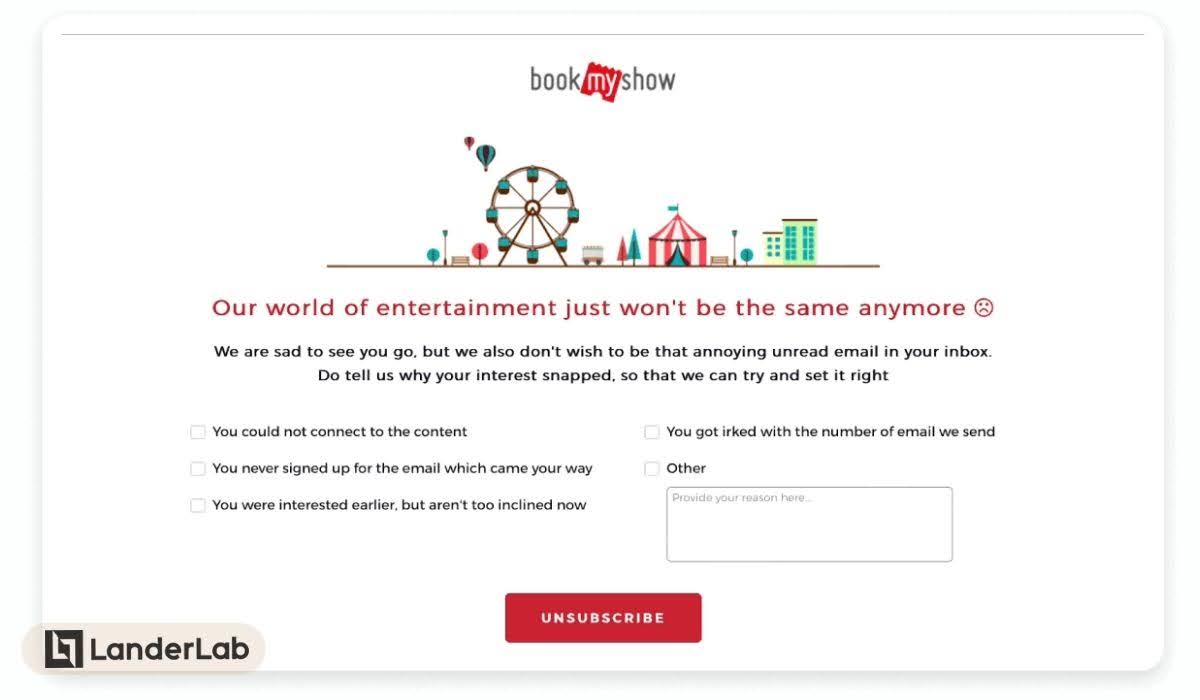
As you can see, the landing page types show above all have specific goals: either to get you to buy, subscribe, unsubscribe, confirm your order/subscription, warm you up for the rest of the funnel, and so on!
Remember the key question when choosing a landing page type: WHAT IS YOUR GOAL? Choose the landing page that can support your goal.
Create Impactful Landing Pages with These Essential Elements
Now for the core of this post: how to craft an effective landing page for your campaign.
After selecting the right type of landing page, it’s time to build it. Creating an effective page requires understanding visitor psychology and the technical elements driving conversions. Knowing the landing page anatomy can really help you see how each part works together to drive results.
A landing page follows a single-action principle: guiding visitors toward completing one specific action. Like a skilled salesperson who focuses the conversation on helping a customer make one decision, your landing page needs laser focus on its goal.
This explains why traditional website navigation often undermines landing page effectiveness. Including a full menu is like having that salesperson constantly pointing out other departments. It creates distractions that derail conversions.
Let’s explore the must-have elements for your landing page.
1. Visual Design
You have just 7 seconds to convince visitors to stay on your page. Visual design is your most powerful tool for creating that immediate positive impression.
Your landing page’s appearance sets the mood for visitor experience.
Strong visual design includes:
- clean layouts that naturally guide the eye
- high-quality images supporting your message
- demonstrative videos
- consistent brand-aligned visual themes
- strategic white space to enhance readability
2. Hero Image
Your hero image is the attention-grabber that creates your landing page’s first impression.
This crucial visual element sets the tone for the entire user experience and can be:
- Direct Representation: Literal images of your offerings. For example, a food delivery service showing appetizing meal photos, instantly connecting the service to its benefits.
- Emotional Appeal: Images that evoke specific feelings or aspirations. A fitness app might display someone celebrating on a mountain summit, representing the achievement their product helps users attain.
Here’s an example from one of our Debt Relief templates where the hero image shows a debt assessment app.
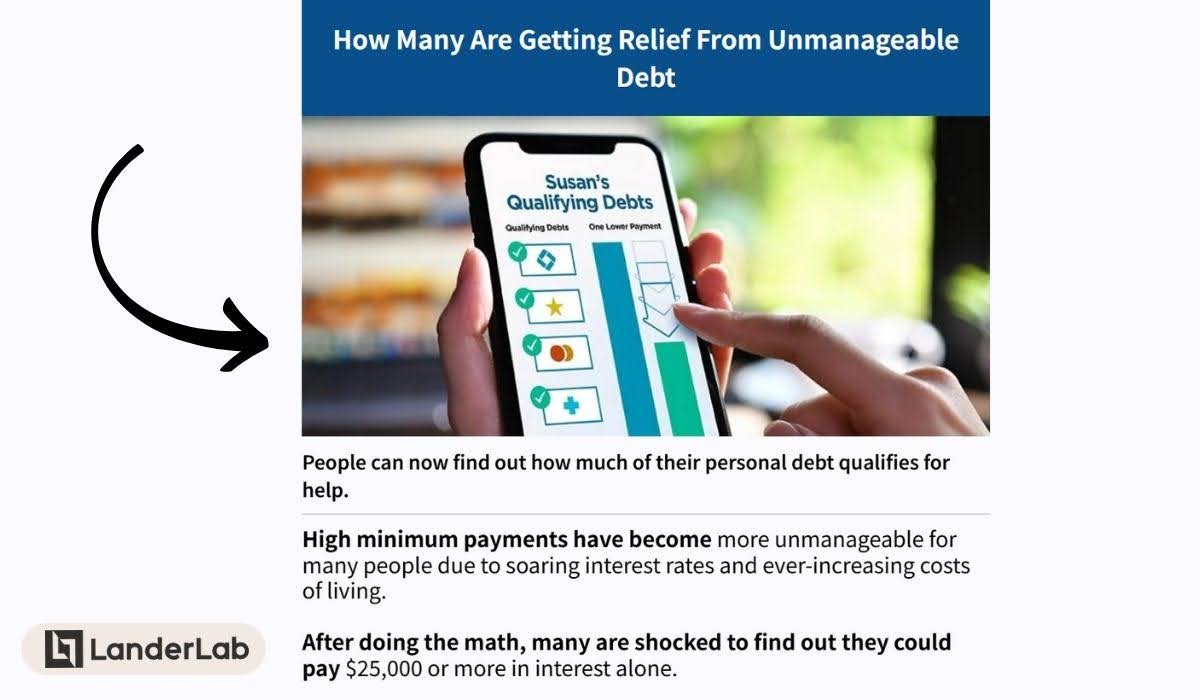
And here’s another landing page for Debt Relief, this time the hero image depicts the hopes of many people struggling with debt: that they can say goodbye to credit card debt.
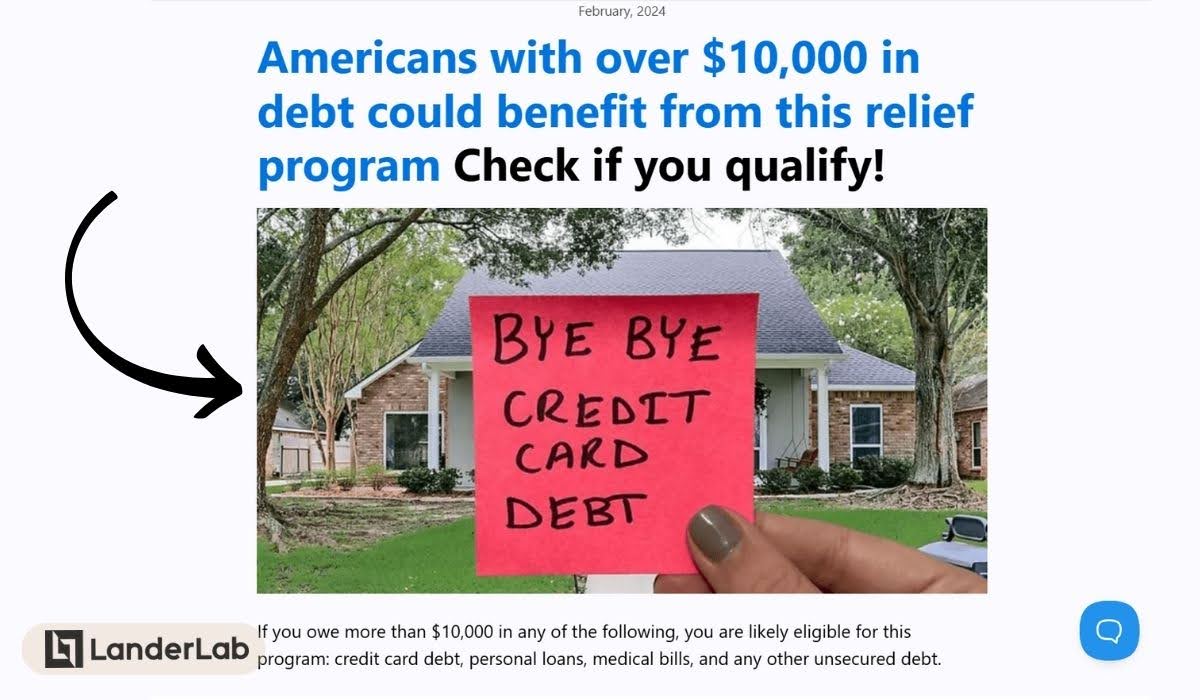
When selecting or creating your hero image:
- Choose images that visually communicate your value proposition
- Maintain high-quality resolution across all devices
- Keep visual clarity and simplicity to avoid overwhelming visitors
- Match the visual style with your brand identity and overall page design
3. Headlines
Your headlines must capture interest and communicate value in just
three to ten words (as much as possible).
The Headline is the HOOK that captures attention and presents your main value proposition in a snappy but easy-to-understand manner.
Studies show people skip complex headlines and go straight for content with simpler headlines.
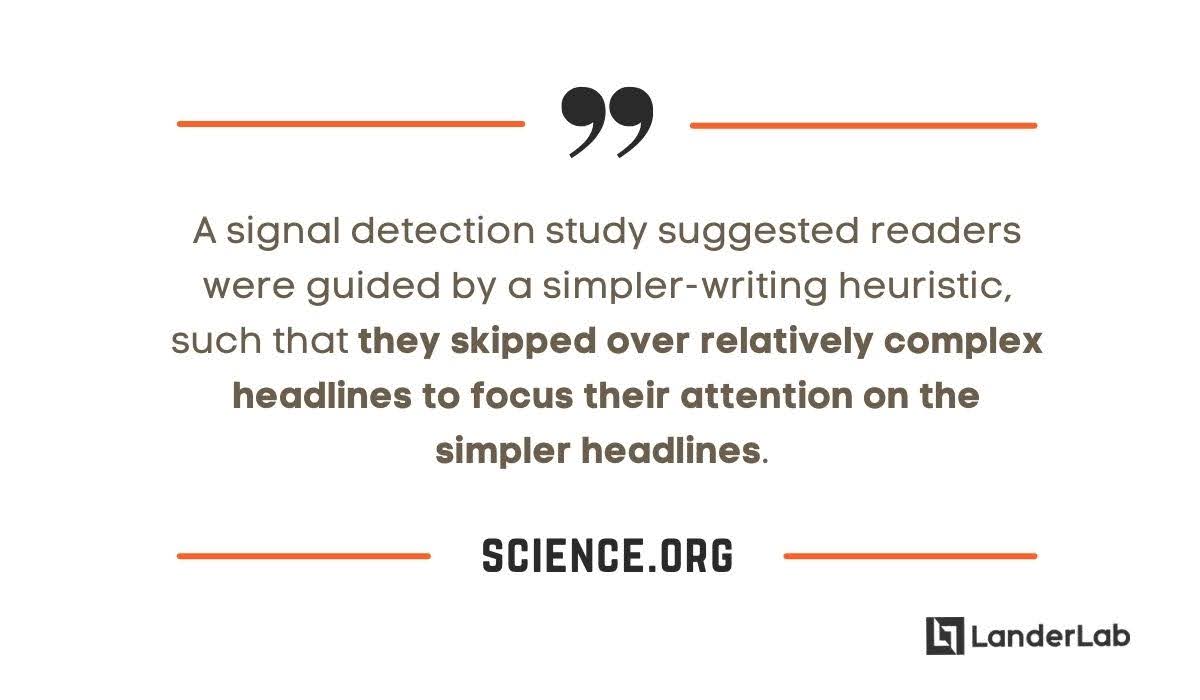
This makes it perhaps the most challenging element to perfect, as it needs to accomplish several goals simultaneously:
- Grab immediate attention
- Speak clearly and directly to your audience’s needs or desires
- Encourage further reading and communication
For example, instead of “Welcome to Our Website,” an effective headline might read “Transform Your Marketing in 30 Days” or “Save 50% on Energy Bills Guaranteed.”
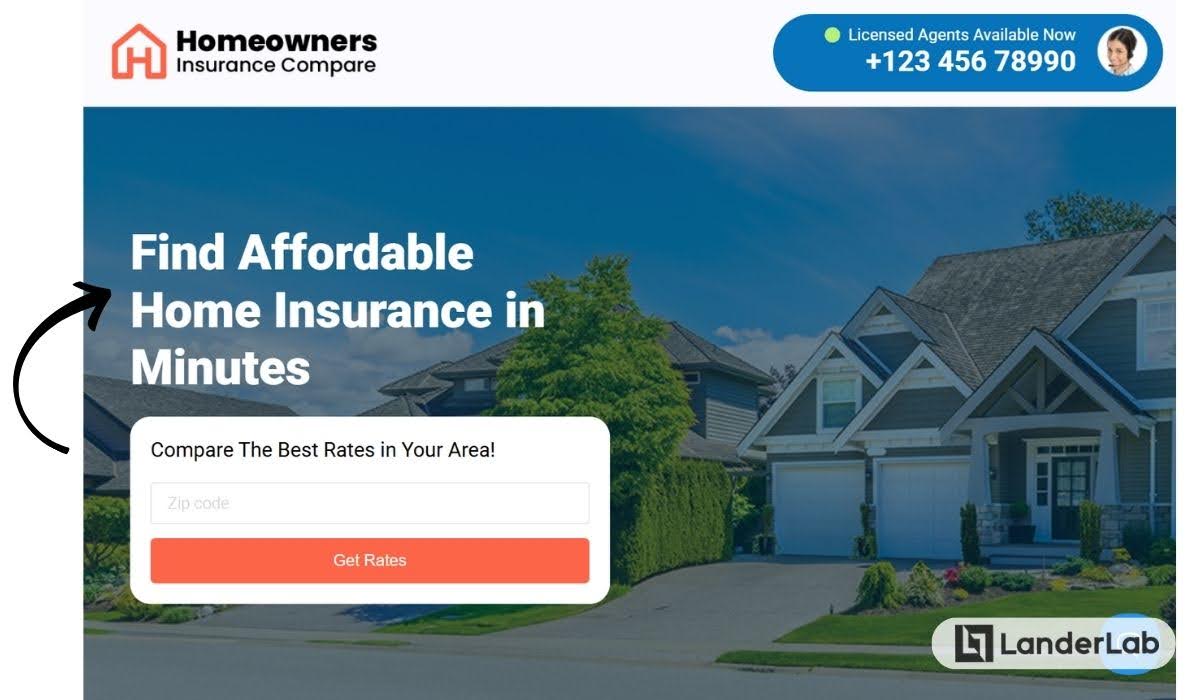
It should set the tone and intensity tailored to suit your campaign.
To create powerful headlines, you should:
- Make headlines and subheadings tell a coherent story together
- Use action-oriented language that creates momentum
- Include emotional triggers that connect with your audience’s desires or pain points
- When applicable, add specific numbers or statistics that validate your claims
4. Description
The description expands on your headline’s promise.
This section can do any of the following:
- List out the possible pain points the visitor is experiencing and would like to solve
- Quickly explain how the product/service/offer solves the visitor’s problem
- Clarify exactly what the landing page will tell you, like a TLDR section
- Answer the crucial question: “What’s in it for me?”
When writing this section, remember to maintain clarity and conciseness by using language that resonates with your target audience.
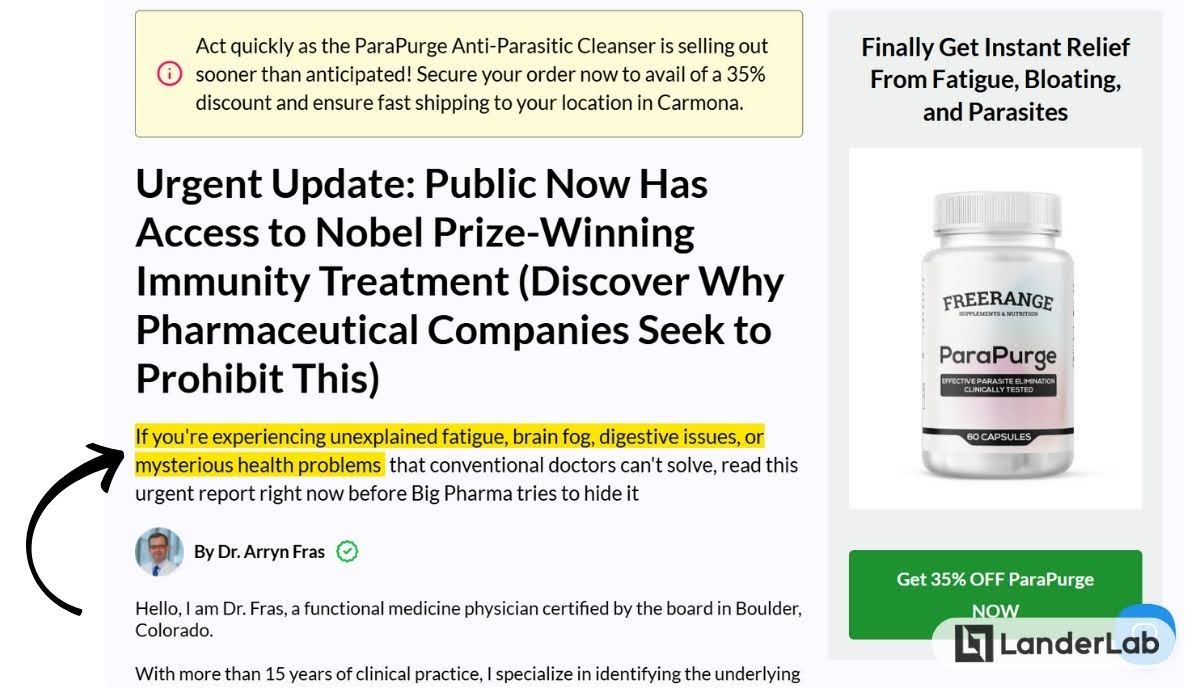
5. Supporting Copy
Supporting copy expands on your headline and description’s promise with a detailed explanation.
It should clearly state your offer and how it solves visitor problems. Use simple language that’s easy to understand, keeping your message clear and brief.
Not all lead generation pages need extensive text, especially shorter ones. However, additional explanation helps when your offer requires more context.
When writing supporting copy:
- Address your target audience’s specific questions or concerns
- Use clear, concise language that builds on your headline
- Organize information in digestible chunks
- Use bullet points for key benefits or features
- Focus on how your offer solves specific problems
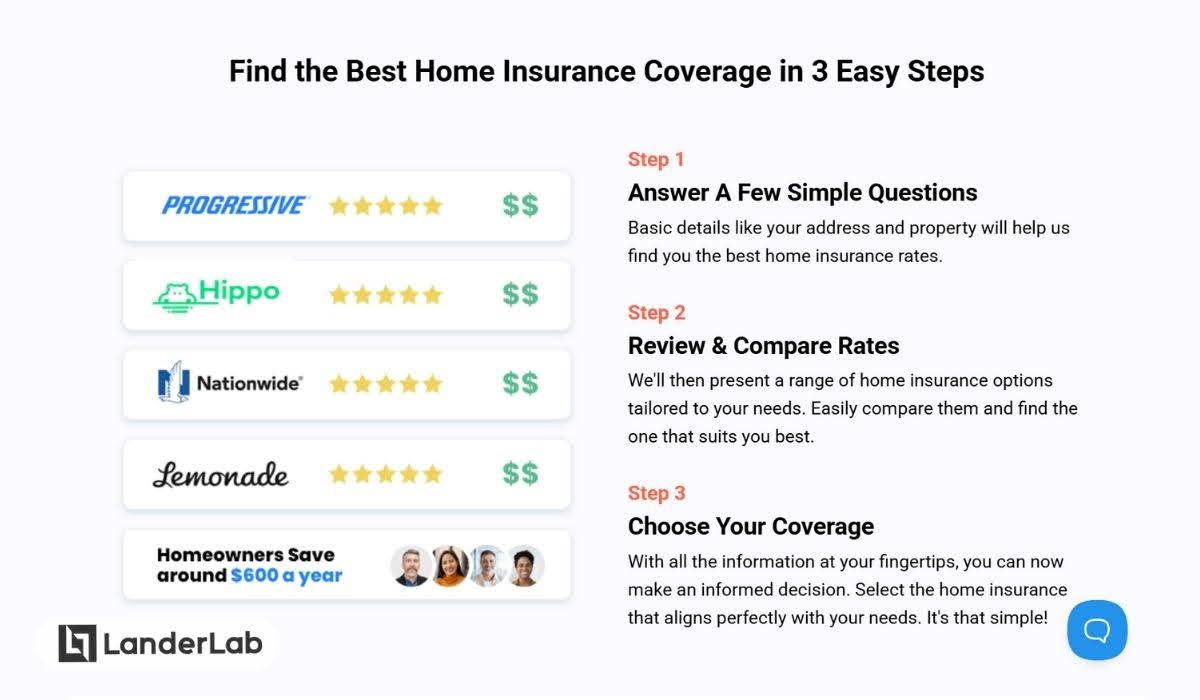
6. Form
Not all landing pages need forms, especially if your goal is to warm up prospects or provide information.
If using forms, remember they connect interest to action but require careful balance.
Each additional field creates friction and potentially reduces completion rates. Hubspot research confirms the correlation between form length and conversions.
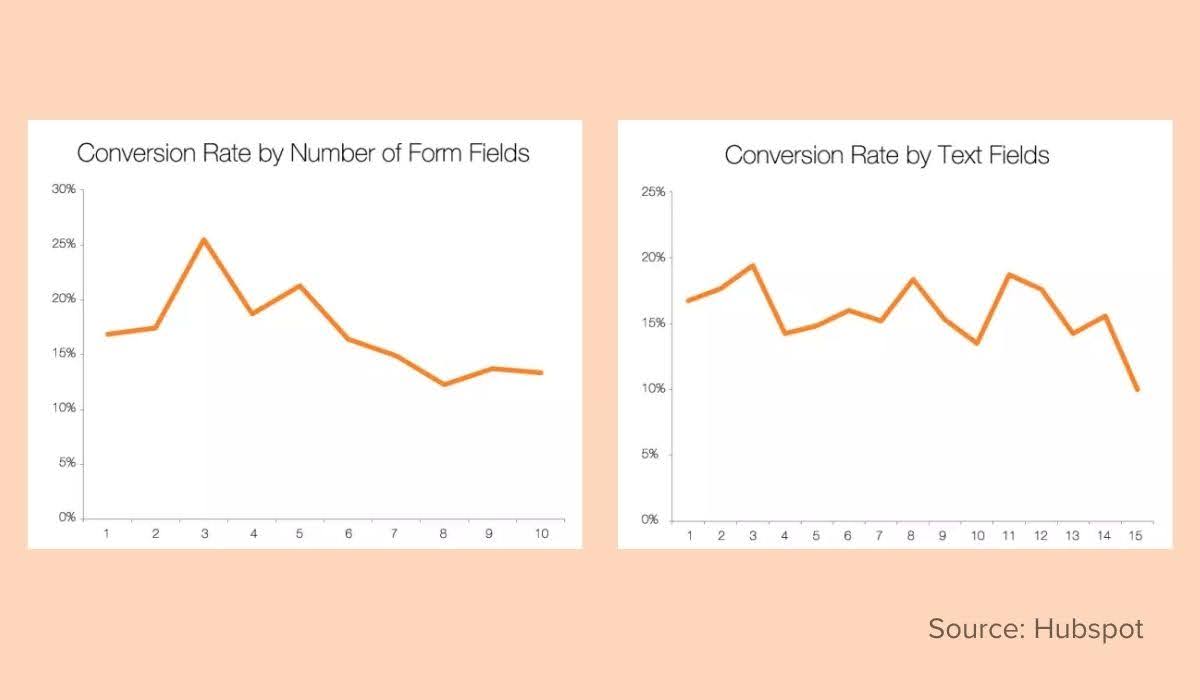
When designing forms:
- Request only information that clearly benefits your follow-up process
- Group related fields for logical flow
- Use clear field labels
- Consider progressive profiling to gather additional information over time
7. Benefits Summary
This section serves as your detailed pitch.
While it should be your most comprehensive section, it needs to maintain clarity and focus:
- Present benefits in order of importance to your audience
- Focus on outcomes rather than features
- Keep language simple and direct
- Break information into digestible chunks
- Use clear, concrete examples
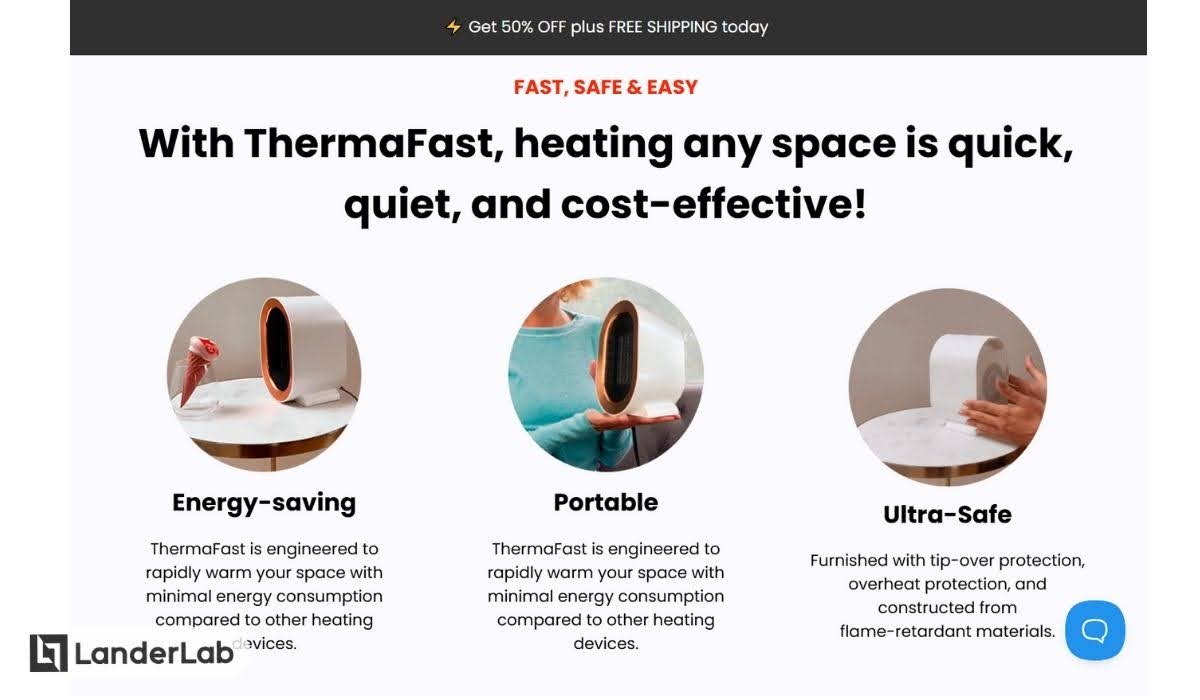
Resist promoting features instead of benefits. Put people’s needs before technicalities to encourage action. Highlighting benefits over features creates a greater impact on your campaign.
8. Social Proof
In the digital world, where visitors can’t physically examine products or meet your team, social proof becomes crucial for building trust. It functions as the digital equivalent of word-of-mouth recommendations. You can explore different types of social proof to understand how they influence user trust.
Effective social proof includes:
- Success rate statistics
- Industry awards and recognition
- Customer testimonials that address specific benefits
- Reviews from verified users
- Media Mentions
- Client logos (especially for B2B services)
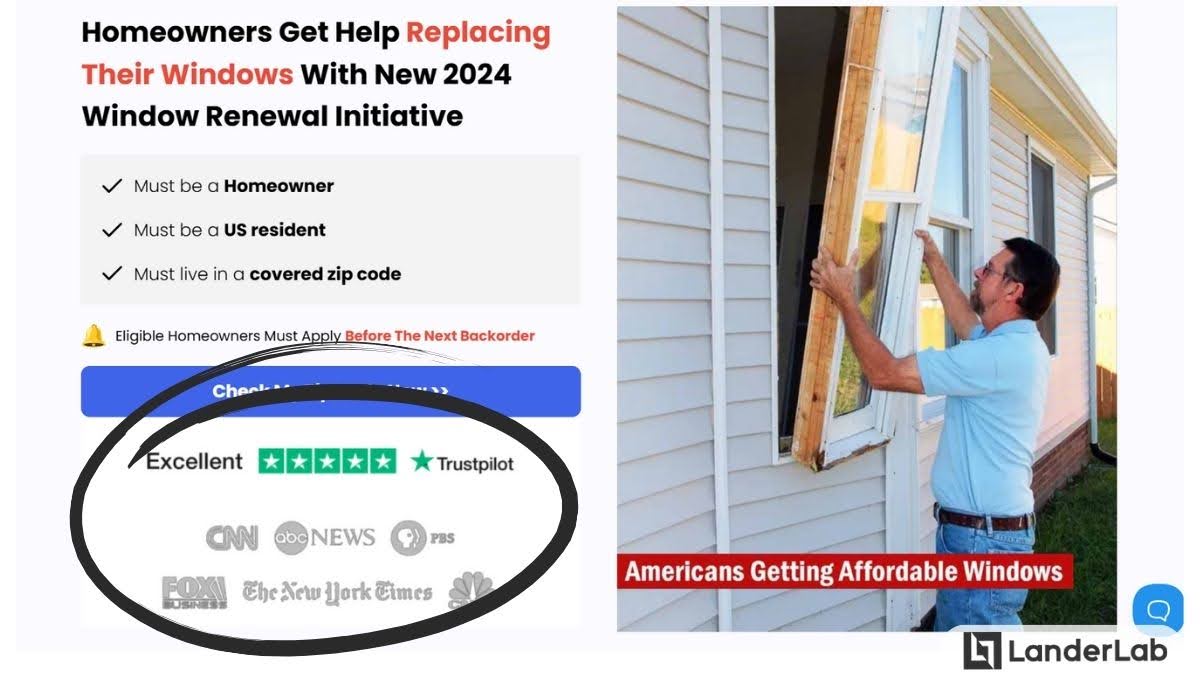
9. Call to Action
Your call to action (CTA) is the culmination of your landing page’s purpose, a clear, compelling invitation to take the desired action.
Effective CTAs facilitate various actions: completing purchases, downloading content, installing applications, registering for events, and subscribing to services.
These brief but powerful prompts, typically two to six words, must clearly indicate the next step while creating urgency or value. Effective CTAs should:
- Use action-oriented language
- Create clarity about what happens next
- Align with the visitor’s stage in the decision process
- Stand out visually from the rest of the page
For instance, “Get A Quote” works better than simply “Click Here” because it communicates the action, the urgency, and the value proposition.
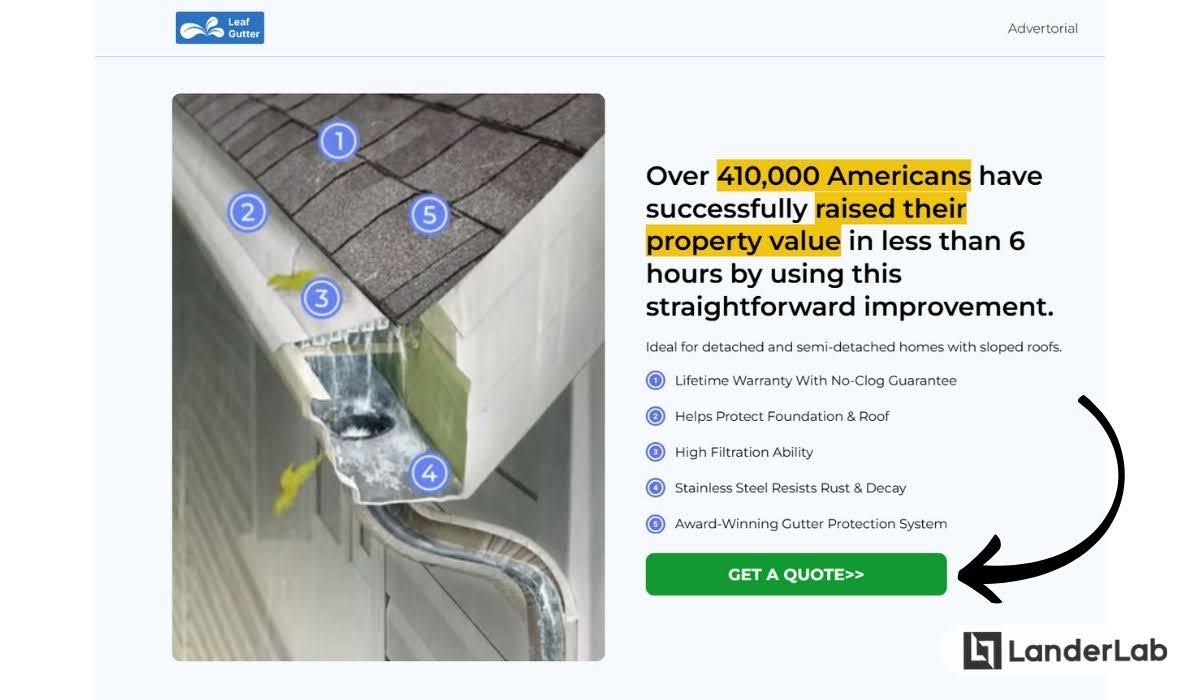
Page Footer
At the bottom of your landing page is the footer. It should include the company name and the copyright year.
Some links you can include are:
- Privacy Policy (if you have forms on the page)
- Terms and Conditions / Terms of Use
- Advertorial disclosure (if your landing page is an advertorial)
- Other policies as required by the territory where you are promoting.
Some links are required by the traffic source (such as Google and Facebook/Meta), so make sure you add them to avoid landing page rejection.
Creating Harmony Between Landing Page Elements
After familiarizing yourself with the essential elements of the landing page, you now need to learn how to utilize them for your unique campaign.
While understanding each element is necessary, the actual effectiveness of a landing page comes from how these components work together.
Consider these principles when building your page:
1. Visual Hierarchy
- Arrange elements to guide attention naturally toward your CTA
- Use consistent styling to maintain retention and professionalism
- Ensure each of the elements support rather than compete with each other
2. Content Flow
- Build information progressively
- Maintain momentum toward conversion
- Address potential objections before they arise
3. Mobile Optimization
- Ensure all elements display correctly on different devices
- Maintain readability across screen sizes
- Keep load times quick for all content
4. Measure Landing Page Success
Observe how effective your landing pages are when it comes to conversion. You can track these key metrics:
Primary Metrics
- Conversion rate
- Bounce rate
- Form completion rate
- Click-through rate on CTAs
- Cost per acquisition
- Return on ad spend (ROAS)
Secondary Metrics
- Traffic sources performance
- Time on page
- User behavior patterns
- Mobile vs. desktop performance
- Browser type performance
- Location-based performance
Before performing tests, make sure you identify the right metrics to observe. You should also understand the function of these performance metrics first.
5. Testing and Refinement
Remember that creating an effective landing page is an iterative process. Regular testing and refinement of each element can help optimize your page’s performance.
For this very reason, you should use a landing page builder with advanced A/B testing capabilities. You can explore the differences between landing page split testing and traditional A/B testing to better understand which approach works best for your campaigns.
There are various ways to test your landing pages. Here are some:
- A/B testing different elements (headlines, images, CTA, main copy, etc.)
- A/B testing totally different page types or styles
- Trying various CTA placements, wording, and strategies
- Experiment with different types of social proof
- Test different visual layouts
- Monitor user behavior through heat maps and session recordings
- Track conversion metrics and identify drop-off points
- Gather user feedback through surveys and interviews
Continuously test and optimize until you reach your campaign goals. Once you do, check if you can improve the landing page even further! Running advertising campaigns on various landing pages is an ongoing process if your goal is business growth!
Landing Page Best Practices
Congratulations! You’ve finally understood everything there is to know about landing pages. But this is not the end. In fact, your marketing journey has just begun.
You’ll encounter some roadblocks along the way for sure. But to reduce the incidence of costly mistakes, you should follow some of the best practices we’ve gathered to help you get started on the right foot.
To maximize the impact of your landing pages, follow these essential guidelines:
Maintain Message Consistency
Think of your marketing funnel as a continuous conversation with your potential customers. Each touchpoint, from the initial ad to the final conversion, should maintain consistent messaging.
What you say in the ad, follow through on the landing page. This consistency builds trust and reduces confusion that could prevent conversion.
Clear Value Proposition
Immediately communicate what visitors will gain by taking your desired action. Make the benefit obvious and compelling within seconds of landing on the page.
Create Focused Design
Keep the design clean and focused on your conversion goal. Maintain a visual hierarchy that grabs attention, use white space effectively, and keep elements above the fold.
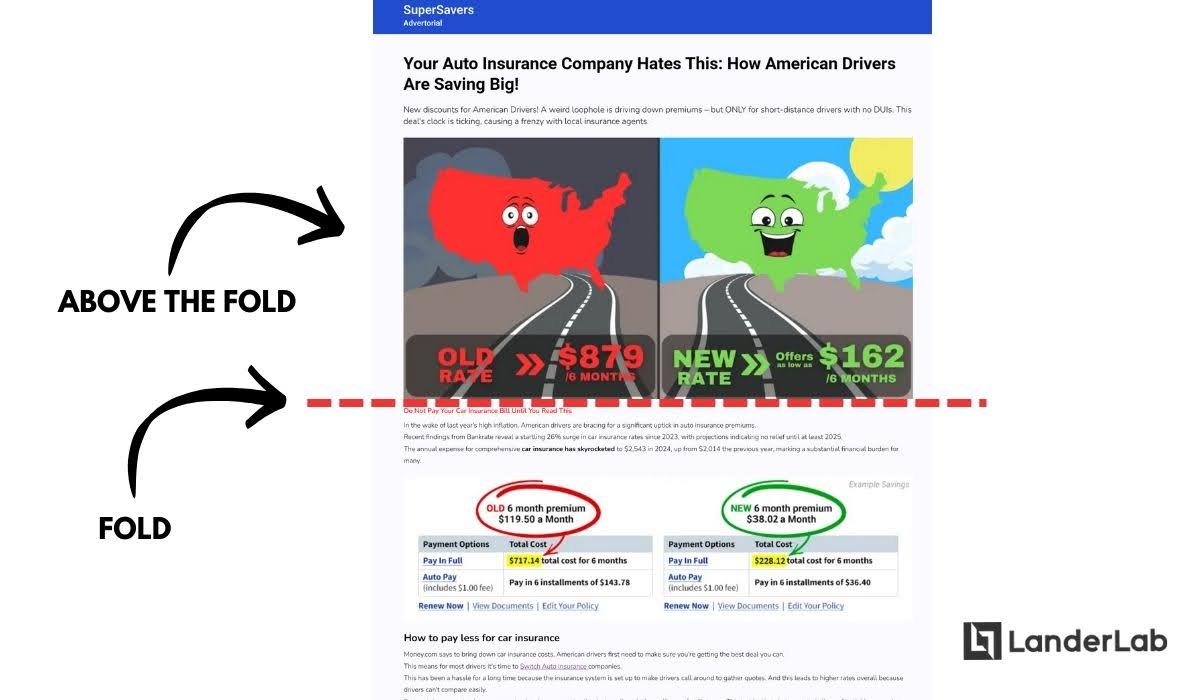
Optimize Page Performance
After the design, focus on the performance. Page speed significantly impacts both user experience and search engine rankings. Consider these technical optimization strategies:
Image Optimization
- Resize images to match your maximum display width
- Use modern image formats and compression tools
- Implement lazy loading for below-the-fold images
Technical Optimization
- Leverage content delivery networks (CDNs)
- Minify and optimize code
- Implement browser caching
- Reduce server response time
Search Engine Optimization
While maintaining conversion focus, implement SEO best practices only if the landing page is appropriate for organic search.
Here’s what you can do:
- Research and incorporate relevant keywords naturally
- Optimize meta titles and descriptions
- Ensure proper heading hierarchy
- Implement schema markup where appropriate
- Create quality internal links
If the page is not appropriate to appear in search results, make sure to add a noindex tag.
Try Different Types of Social Proof
Social proof taps into fundamental human psychology: our tendency to look to others when making decisions.
Aside from the forms of social proof typically added, like brand and review site logos, you can also utilize your success rate statistics and specific customer testimonials to boost consumer confidence.
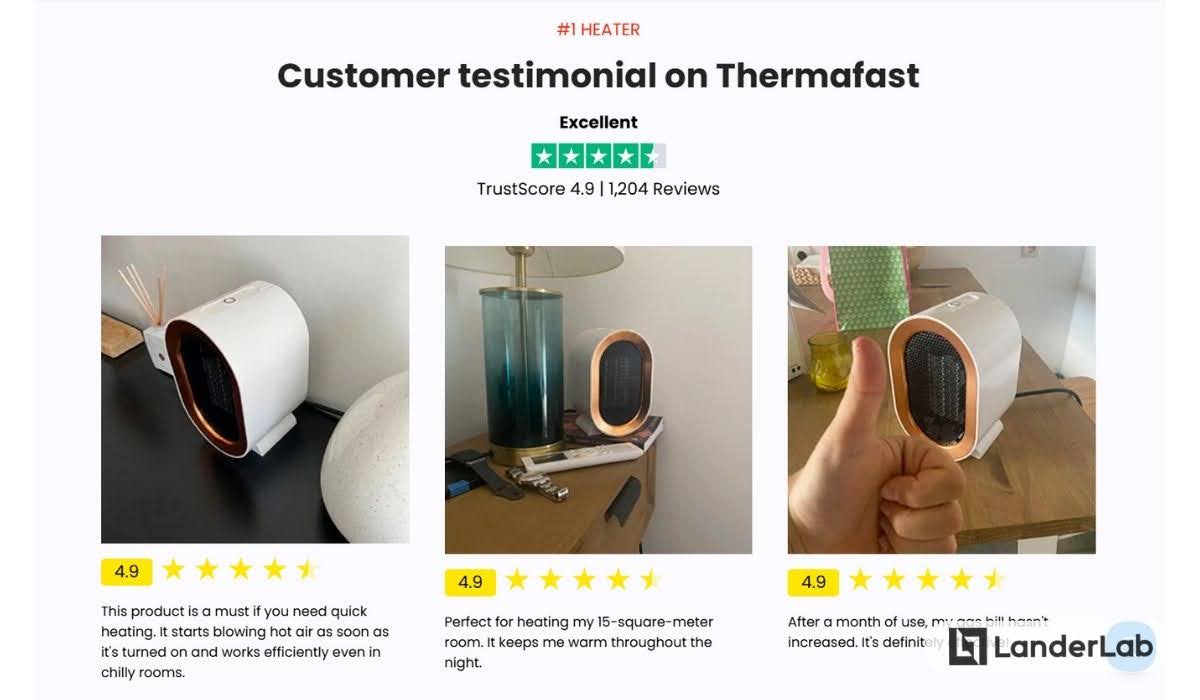
Try Unique CTAs
Some audiences convert with the usual call-to-actions like “Book Now”, “Submit”, “Subscribe”, and so on.
But we’ve found that sometimes, unique CTAs work better, especially when they’re specific to what you want the visitor to do.
You can even try different CTAs on one page, like the one in our example below.
As always, testing is important.
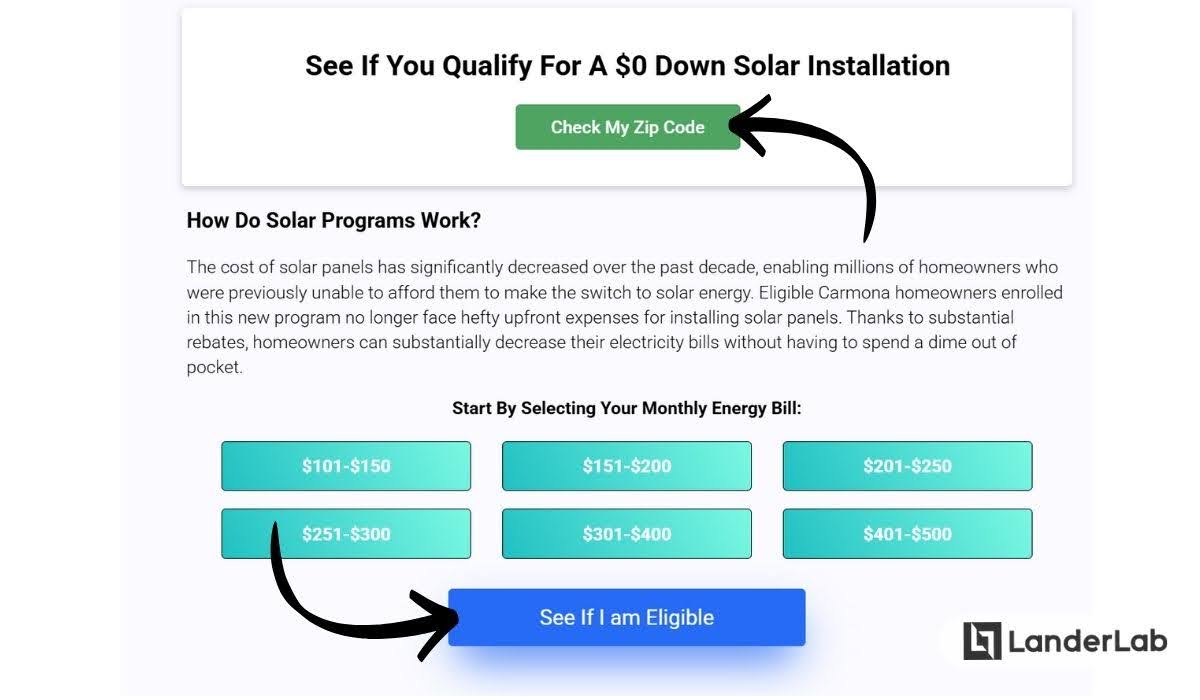
Remove Navigation Menus and Links to Other Pages
All CTAs and links within the landing page should direct towards the next part of your funnel. Only the disclosures, terms, privacy policy, etc. should be added at the bottom for compliance reasons.
If you don’t want to add external links, you can add the disclosure on the page itself, as long as it is not too long.
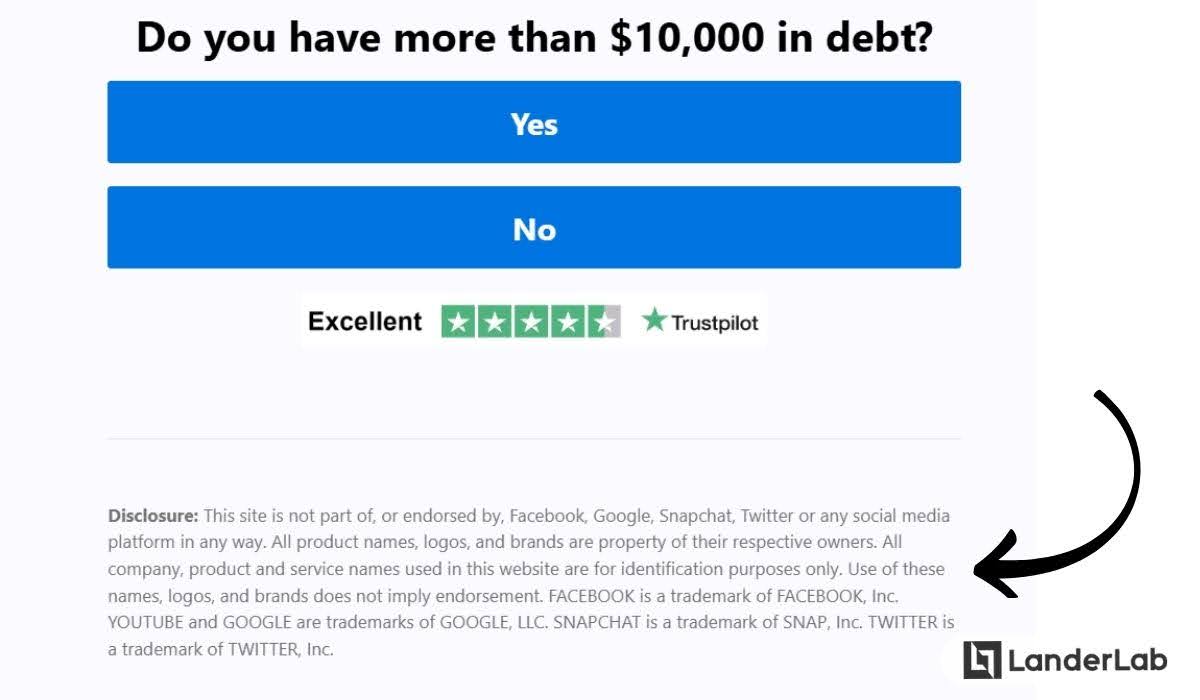
Craft Different Landing Pages Based on Traffic Source
You need to know how people react to your landing page based on where they came from.
Different traffic sources bring different types of visitors. Some visitors know more about your offer than others, and some are more ready to take action than others.
Because of these differences, you need to adjust your landing pages to match each group. This helps you get the best possible results.
Here’s how to optimize your landing pages based on key traffic sources:
-
Paid Search Traffic
For visitors coming from paid search ads, create landing pages that directly address their search intent. These users are actively seeking solutions, so your page should:
- Feature prominent headlines that match your ad copy and search keywords
- Include concise, benefit-focused content that immediately shows how you solve their problem
- Minimize distractions and focus on a single, clear call-to-action
- Highlight trust indicators like testimonials or reviews to validate their choice
-
Social Media Traffic
Social media visitors often discover your offering while browsing, rather than actively searching. Your landing pages for social traffic should therefore:
- Lead with strong visuals that maintain consistency with your social media posts
- Tell a compelling story that builds on the interest shown in your social ads
- Include social proof and user-generated content to leverage the social aspect
- Feature a softer conversion approach, as these visitors may need more nurturing
-
Email Marketing Traffic
Email subscribers have an existing relationship with your brand, so your landing pages should:
- Maintain message consistency with your email campaign
- Acknowledge their subscriber status to create continuity
- Focus on the specific offer or value proposition mentioned in the email
- Include personalized elements based on subscriber data when possible
-
Organic Search Traffic
Visitors from organic search may be at various stages of the buying journey. These landing pages should:
- Provide comprehensive information that validates their search query
- Include relevant keywords naturally throughout the content
- Feature educational elements that build trust and authority
- Offer multiple conversion options to accommodate different stages of readiness
Each traffic source brings visitors with different expectations and levels of intent. By aligning your landing page design and content with these characteristics, you can create more relevant experiences that lead to better conversion rates.
Monitor the Landing Page Experience
When people click on your ad, they expect something specific. Your landing page then either gives them what they expected or it disappoints them.
The landing page experience includes how happy users are with what they find, and how well the page matches what they were looking for. It covers their first impression all the way to the final action they take.
To keep your campaigns effective and avoid quality issues, it’s essential to regularly monitor your landing page performance and ensure it aligns with user intent.
More importantly, it’s also a score that Google Ads (and other platforms) assigns to your page after your ad has received several clicks. A low score means there’s a mismatch between the ad and landing page, so you better start improving either of the two if you don’t want to pay more for clicks, or worse, get your campaign rejected!
Recommended Reading:
Which Attributes Describe A Good Landing Page Experience
Start Making Landing Pages Work for Your Business!
The success of your marketing campaigns hinges on choosing and implementing the right landing page strategy. These dedicated environments for conversion serve as the bridge between your marketing efforts and business results.
The most effective landing pages share three critical characteristics:
- They align perfectly with your campaign goals
- They match your audience’s needs and conversion readiness
- They evolve based on performance data and user behavior
Whether you’re generating leads, selling products, or building an email list, your landing pages should focus on creating value for both your business and your visitors.
Begin with best practices, test rigorously, and let the data guide your optimization efforts. Success comes not from following a rigid formula; it comes from finding the unique approach that resonates with your specific audience and business goals.
If you don’t want to start from scratch, we recommend working with a landing page builder that understands what a landing page should have, with easy-to-use templates to boot!
Frequently Asked Questions on Landing Pages
Can I create a Landing Page without a Website?
Absolutely. You can create a standalone web page without maintaining a full website. This approach works particularly well for short-term marketing campaigns, testing new concepts, and product launches.
Do I need a Domain to create a Landing Page?
Your landing page needs a domain to exist on the internet. However, most landing page builders offer default domain options to host your page, making it easier to start without investing in a custom domain. But we strongly recommend getting your own.
What is the ideal length of the Landing Page?
There is no hard and fast rule, which is why testing multiple landing web pages is key!
How Many Landing Pages to Create?
Your optimal number of landing pages depends on several strategic factors: the campaign structure, audience segmentation, your product/service portfolio, and the testing strategy you are using.
Studies have shown that 10 to 15 landing pages per business are necessary if you want to achieve at least 50% growth.
Build Landing Pages That Make Every Second Count
From your first headline to your final CTA, every element on your page should work together to hold attention, build trust, and drive action. LanderLab helps you design pages that do exactly that, with full control over visuals, copy, and user flow.

